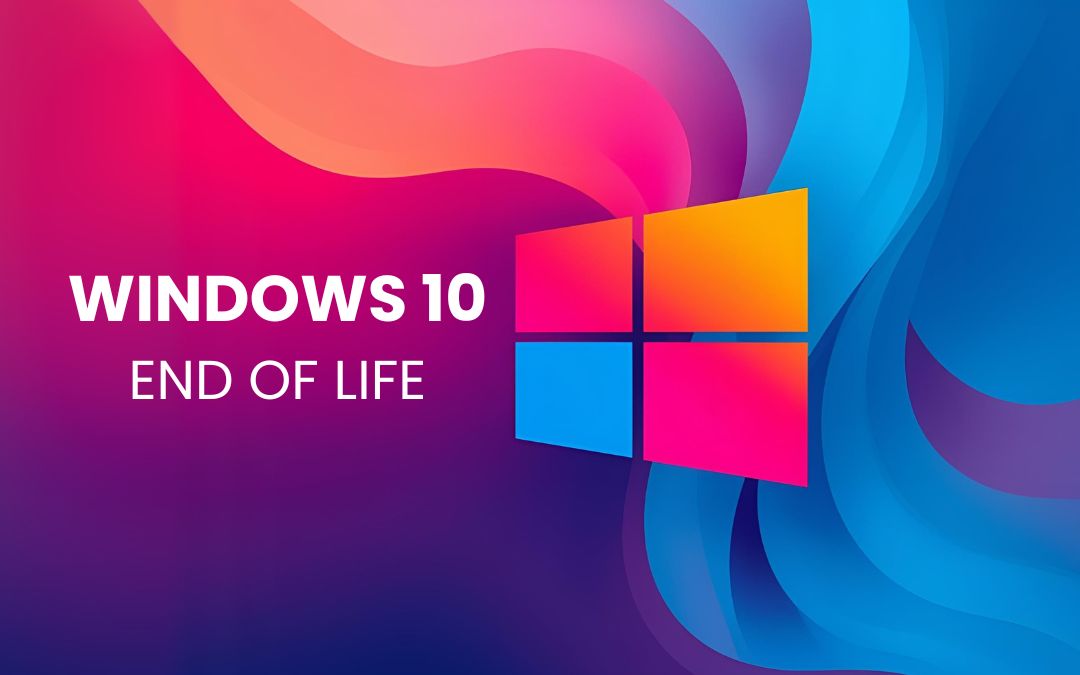
Windows 10 reaches end-of-support on 14 October 2025 — just days away. After this date, Microsoft will no longer release security patches or updates. For SMEs still running Windows 10, the risks are immediate: unpatched vulnerabilities that criminals can exploit, compliance audits that flag unsupported systems, and potential downtime that disrupts operations.
This article walks you through what the deadline for Windows 10 end-of-support means, how to check if your devices can be upgraded, and what options you have if they can’t.
With the cut-off so close, the right steps now can protect your business from unnecessary risk.
How to check which Windows version your devices are running
Before deciding on upgrades or replacements, it’s worth confirming which version of Windows your devices are currently using. You can do this quickly:
- Press Windows Key + R to open the Run dialog.
- Type “winver” and press Enter.
A window will appear showing your Windows version and build number.
If the screen displays Windows 10, it’s important to plan an upgrade or replacement. Devices already running Windows 11 will continue to receive updates and support as normal.
Will your current devices run Windows 11?
Not every device running Windows 10 will be able to make the leap to Windows 11. Microsoft has set minimum hardware requirements to ensure the new operating system runs securely and efficiently. These include:
- Processor: 1 GHz or faster, with at least two cores on a compatible 64-bit CPU.
- RAM: 4 GB or more.
- Storage: 64 GB or more of available storage.
- Security: Trusted Platform Module (TPM) version 2.0 and Secure Boot capability.
Older machines may struggle to meet these requirements, and even if they technically qualify, performance could be noticeably slower. For SMEs, that can mean frustration, lost productivity, and hidden costs.
With the cut-off here, it’s essential to test upgrades on a handful of devices or arrange a professional assessment right away. Operum Tech runs these assessments for SMEs, providing a clear picture of which devices can be kept, which are liabilities, and how to plan budgets with no surprises.
What to do if your hardware can’t make the leap
For some devices, upgrading to Windows 11 simply won’t be realistic. In these cases, businesses have a few paths forward:
- Extended support: Microsoft offers paid security updates for certain editions, but this is expensive and only a temporary stopgap. It leaves you tied to ageing hardware and doesn’t solve long-term compliance risks.
- Invest in new hardware: The smarter long-term choice. Modern devices come with Windows 11 preinstalled, deliver stronger performance, and include better built-in security.
With the deadline here, SMEs that can’t upgrade should prioritise critical devices immediately and plan phased replacements for the rest. A structured replacement plan keeps teams productive while spreading costs over time.
Don’t let old devices leak your business data
When it comes time to replace older machines, it’s vital to ensure that no business data is left behind. Simply deleting files or performing a basic reset isn’t enough — sensitive information can often be recovered unless devices are properly sanitised.
To securely wipe old laptops or PCs, follow these steps:
- Back up any important files you want to keep.
- Use the built-in Windows Reset this PC option with “Remove everything” and clean the drive selected.
- For added peace of mind, consider using professional data erasure tools that meet recognised standards such as DoD 5220.22-M or NIST 800-88.
- Once wiped, devices can be safely recycled, resold, or donated.
We’ve covered this process in more detail in our blog on secure laptop disposal. Taking these extra steps ensures compliance with data protection laws and protects your business from accidental data leaks.
Plan now, avoid disruption later
The countdown is almost over. On 14 October 2025, Windows 10 end-of-support is reached, and every day you wait increases security and compliance risks.
But even at the last minute, you don’t have to face the transition alone.
Operum Tech specialises in helping SMEs move fast: assessing which devices can upgrade, planning phased replacements, and securely wiping retired hardware. Acting now ensures your systems stay protected, your team remains productive, and your business avoids disruption.
Get in touch today to secure your transition to Windows 11 — before unsupported systems put you at risk.



